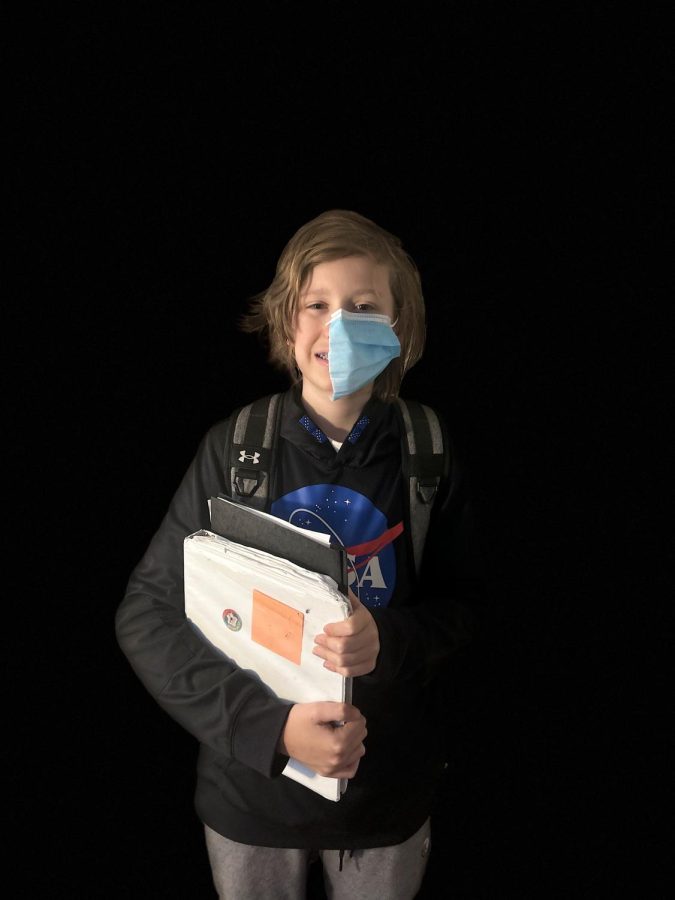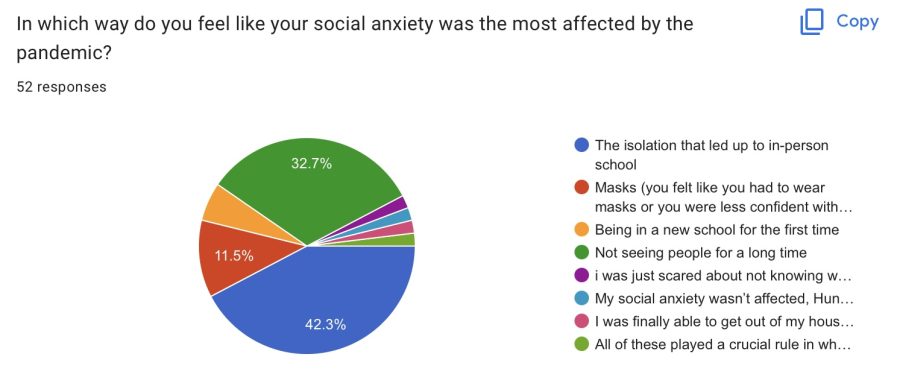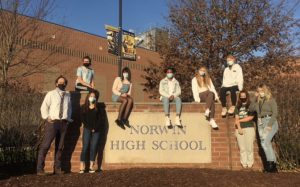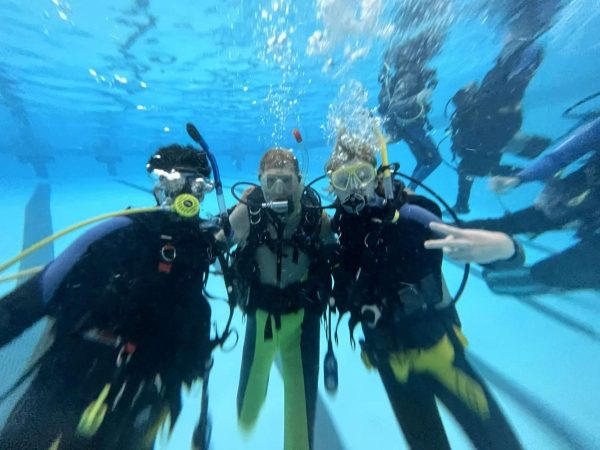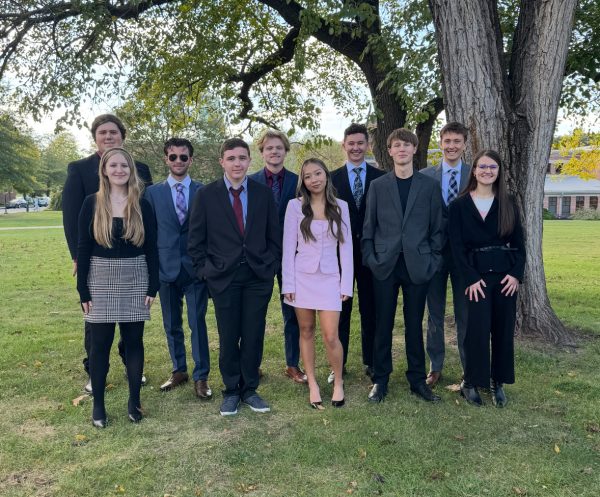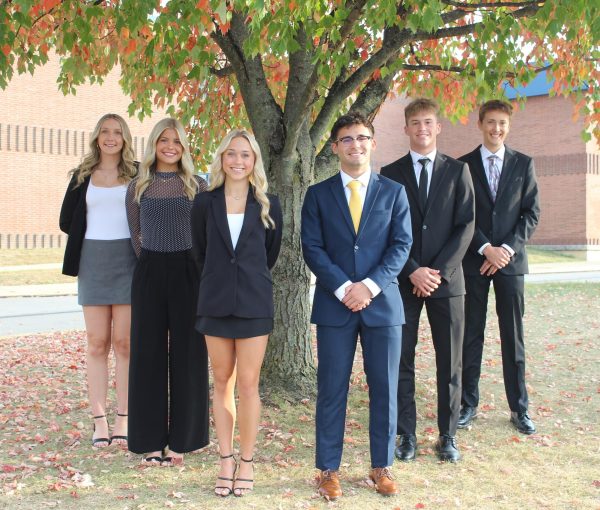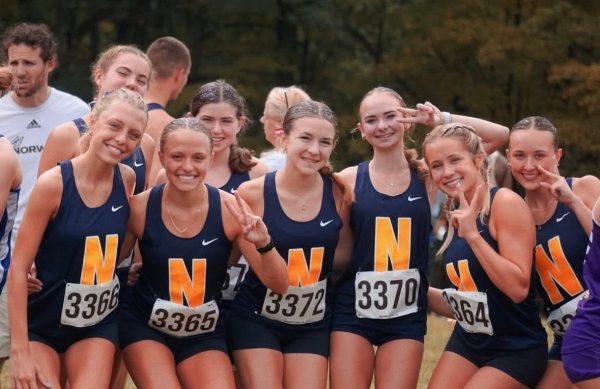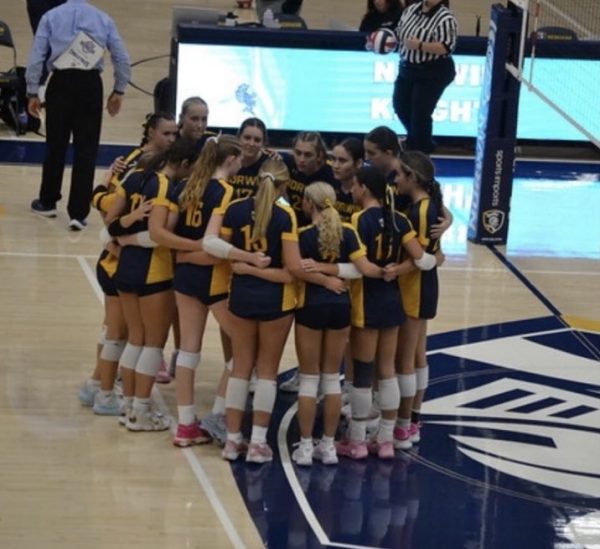From masked to unmasked
Transitioning back to school from the pandemic
Max Fleckenstein (7), like all Norwin students, had to participate in a variety of schooling (in-person, online, etc.) during the COVID-19 pandemic.
One year ago, a student rushed to the bus stop in order to prevent themselves from being late to school, with a mask in hand and their book bag on their back. On the other hand, a high school student woke up used to the absence of human relations because they had to stay isolated in order to be safe for so long. Now, students rush to the bus forgetting the need of a mask because COVID-19 cases have gone down. Although for many students, the reality-shaking effects of the coronavirus have altered today’s society tremendously.
The return from COVID-19 caused immense amounts of trouble and hardships globally. At Norwin High School, large differences in students’ mental health and social anxiety have shown to light because of the underlying isolation caused by COVID-19. While many students feel like they have changed for the better due to the isolation from school, others may feel as if their mental health has worsened due to a drastic change in societal norms. Overall, the transition to high school from the isolation of COVID-19 has proved to be a strenuous and long journey for some students.
According to Elizabeth Williams at the Kaiser Family Foundation, “The pandemic caused disruptions in routines and social isolation for children, which can be associated with anxiety and depression and can have implications for mental health later in life.”
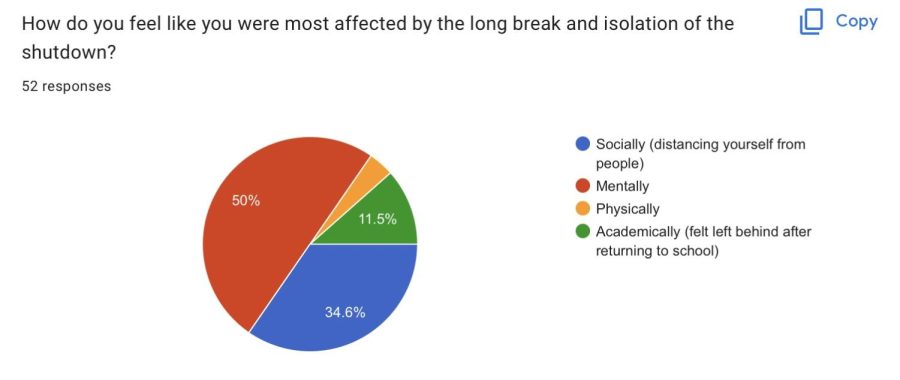
The pandemic has been proven to cause many real-life mental health alterations. Likewise, many people have developed many mental health problems due to this large disruption. However, other students at Norwin might find the isolation of the pandemic as a form of self-expression. In the case of the American naturalist, Thoreau, the isolation due to COVID-19 was a tremendous benefit for people seeking their true selves.
“Nevertheless, after several weeks of social distancing, I’m rediscovering the value of two of Thoreau’s key points: Solitude is helping me recalibrate what matters most, and the current economic slowdown offers short-term gains and a long-term message for the planet,” said Robert Thorson from The Conversation.
Overall, it seems obvious that the isolation of COVID-19 has affected people all over the globe, in a way that can not be forgotten. For students at Norwin, some felt as if their anxiety levels and lack of self-esteem increased greatly over the pandemic.
A shocking 50 percent of Norwin students said that their anxiety levels were at a level of 4 or 5 out of a 1-5 scale (with 5 being the highest) when returning to school. Therefore, making it clear that around half of the students at Norwin High School have felt tremendous amounts of anxiety about the return to school after COVID-19 to an alarming extent.
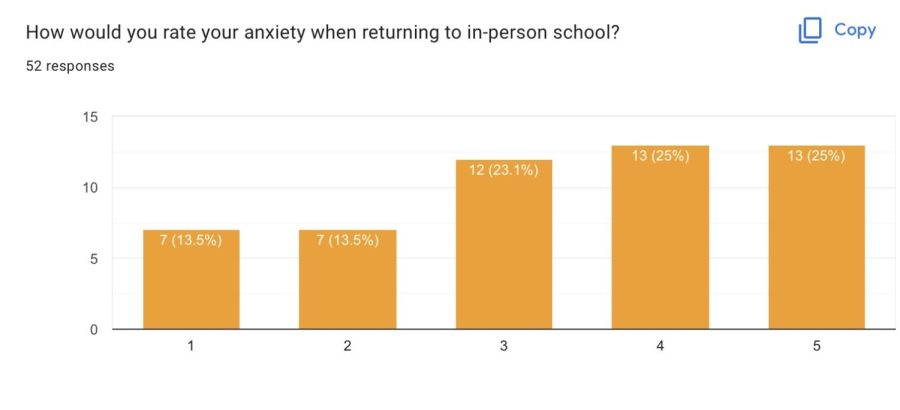
While this could be simply just the shock of returning to high school, the break and abnormalities of last year had too much of an effect on students to simply put to the side. For many, the isolation of the pandemic caused shocking changes in social behaviors in school. Therefore, creating altering confidence levels among Norwin High School students at the beginning of the year back from COVID-19. In a recent poll of over 50 Norwin students, many responses have included the idea that confidence levels have changed with isolation from others.
“With the lack of contact and socialization, my confidence in school has suffered,” said a Norwin senior. “There has been so much change, and grades and mental state have been affected by that.”
Along with this student, over 45 percent of students at Norwin felt like their self-confidence has diminished due to the isolation of the pandemic. Consequently proving that coming back to a social and learning environment caused many students to feel as if their anxiety had increased after the pandemic.
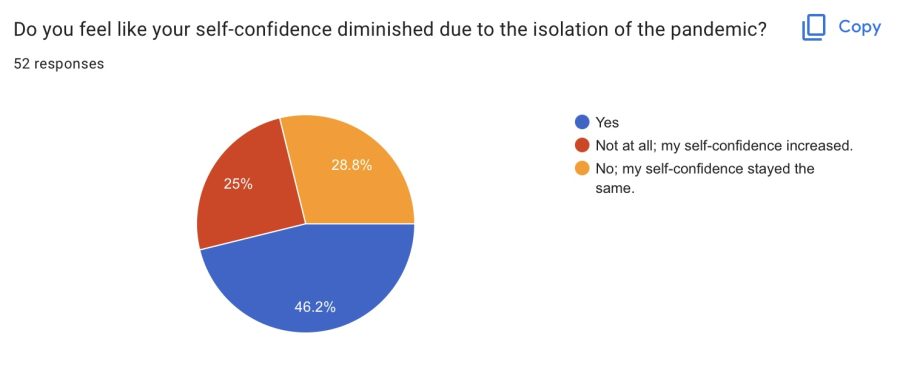
“My anxiety skyrocketed,” said an anonymous Norwin junior from the poll. “I had gotten so comfortable with who I was during the pandemic, coming back to school felt like a punch to the stomach. I had done so much work rebuilding myself, my self-image, and my confidence. It was like I was back in eighth grade, I hated how I looked next to everyone, I was scared to fall behind, I was scared of being the odd one out.”
It is clear that many students felt the underlying effects of the pandemic socially and mentally when coming back to school. This is partially due to the large break in normalities during the pandemic. However, other students felt like they had increased their self-image to an extent that they were excited to return to school, just to see their friends.
According to Alyssa Ames-Sikorsky in an article from Columbia University, “A return to the classroom will be celebrated by many children and adults who are eager to regain a sense of normalcy.”
For many, COVID-19 was a huge break in what was considered normal. Therefore, leaving many students to find excitement when returning to school because of their knowledge that everything will be normal again. Human beings adapt to change, but it usually takes a while to do so and get used to differences. For teachers at Norwin, the return to school from the strong effects of the pandemic seemed relatively easy and was overall very beneficial for students.
“I think the hardest transition, based on the models of instruction Norwin used, was meeting the expectations of more rigor and deadline accountability,” said Mr. Bartels, an online and in-person Norwin teacher. “Another challenge that was present for many students was the social-emotional impact. Some students had to learn new coping mechanisms to make the adjustment both inside and outside of school. For us [Norwin teachers] who had taught prior to the pandemic, it was a “return” to normalcy.”
From a teaching standpoint, it is clear that COVID-19 was a bypass to too many normalities. However, Mr. Bartels reinstates the idea that it was necessary for students to come back to school after online schooling during the pandemic. Additionally, the isolation of the pandemic caused many students to be wary of being in a social setting, like school, again.
In a recent poll, around 35 percent of Norwin students reported to be anxious about being in a social setting again when returning to school from COVID-19. Therefore, it became clear that there were underlying effects causing students to be anxious and to have higher anxiety levels when they returned to school.
The isolation of COVID-19 was detrimental to not only Norwin students, but to society as a whole. However, with new periods of isolation, also comes immense growth.
“Today mandatory social distancing is wrecking the global economy, based on traditional metrics like gross domestic product and stock prices,” said Robert Thorson in an article by the Conversation. “Viewed through Walden, this wreckage may look like a long-overdue correction for an unsustainable system.”
The return to a social setting again has proved to be both a difficulty and a reassurance to many students at Norwin. The overall effects of the pandemic still stand strong in regard to mental health and anxiety. However, as Thorson said, the “economic slowdown [COVID-19 pandemic] offers short-term gains and a long-term message for the planet.”
It is clear that the return to school, from masked to unmasked, has been a journey of self-discovery for many Norwin students. For other students, the return to school has been very beneficial socially and a necessary break in societal norms for students and society as a whole, in order to unmask themselves and rediscover their true personalities.

Grace is a senior and the Co-President of the Knight Krier Newspaper. She is the President of the Knight Readers Club, Secretary of Envirothon, Secretary...


